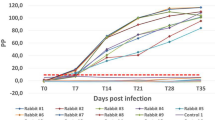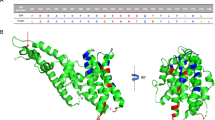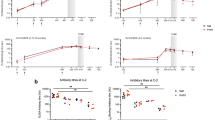Abstract
PREVIOUSLY we reported on the immunology, immunochemistry and immunochemotherapy of experimental Trypanosoma cruzi infection in mice. T. cruzi has at least 9 antigens. Sonic lysates of the cultures contain antigens A, B, C, D, E, F, G and H, and the sediment contains B, E, D and X. Living trypanosomes have antigens B, E and G. Saline supernatant has antigens A, B and F, while distilled water supernatant has A, B and E, and sediment antigens B and X. The recently phenolized cultures have A, B, G and X, and old phenolized cultures have only B. 50 per cent extraction with ammonium sulphate yields A, B, E, G and F. 100 per cent saturation still extracts B, while precipitation with alcohol after full saturation with ammonium sulphate still extracts antigen B. The phenol extract and sediment (Westphal) contain no antigens, but phenol aqueous extract contains antigen B. The antigens B, E and G are major antigens. The agglutinin titre of hyperimmune rabbit serum was 1 : 10,240 and that of horse serum was 1 : 327,600. Both rabbit and horse hyperimmune sera had 1 : 4 titre of agargel precipitin. Immunotherapy with hyperimmune rabbit serum prolonged the survival time in fatal T. cruzi infection in mice two- to three-fold. Chemotherapy with 1-furaltadone, in doses of 50 mg/kg/day for two weeks, followed by 12.5 mg/kg/day for 2.5 months, protected 86.7 per cent of infected mice, while combined immunochemotherapy with hyperimmune rabbit serum plus 1-furaltadone protected all mice for at least 5 months1–3.
This is a preview of subscription content, access via your institution
Access options
Subscribe to this journal
Receive 51 print issues and online access
$199.00 per year
only $3.90 per issue
Buy this article
- Purchase on Springer Link
- Instant access to full article PDF
Prices may be subject to local taxes which are calculated during checkout
Similar content being viewed by others
References
Seneca, H., and Peer, P., Proc. Seventh Intern. Cong. Trop. Med. and Malaria, A 2.1 Sub-section 1. Trypanosomiasis, 2, 239 (1964).
Seneca, H., and Peer, P., Antimicrobial Agents and Chemotherapy, 560 (Amer. Soc. Microbiol., 1964).
Seneca, H., Peer, P., and Regan, J. W., Exp. Parasitol., 15, 479 (1964).
Westphal, O., Luderitz, O., and Bister, F., Z. Naturforsch., 74, 148 (1952).
Milner, K. C., Anaker, R. L., Fukushi, K., Haskins, W. T., Landy, M., Malmgren, B., and Ribi, E., Bact. Rev., 27, 352 (1963).
Author information
Authors and Affiliations
Rights and permissions
About this article
Cite this article
SENECA, H., PEER, P. & HAMPAR, B. Active Immunization of Mice with Chagastoxin. Nature 209, 309–310 (1966). https://doi.org/10.1038/209309b0
Issue Date:
DOI: https://doi.org/10.1038/209309b0
This article is cited by
Comments
By submitting a comment you agree to abide by our Terms and Community Guidelines. If you find something abusive or that does not comply with our terms or guidelines please flag it as inappropriate.



